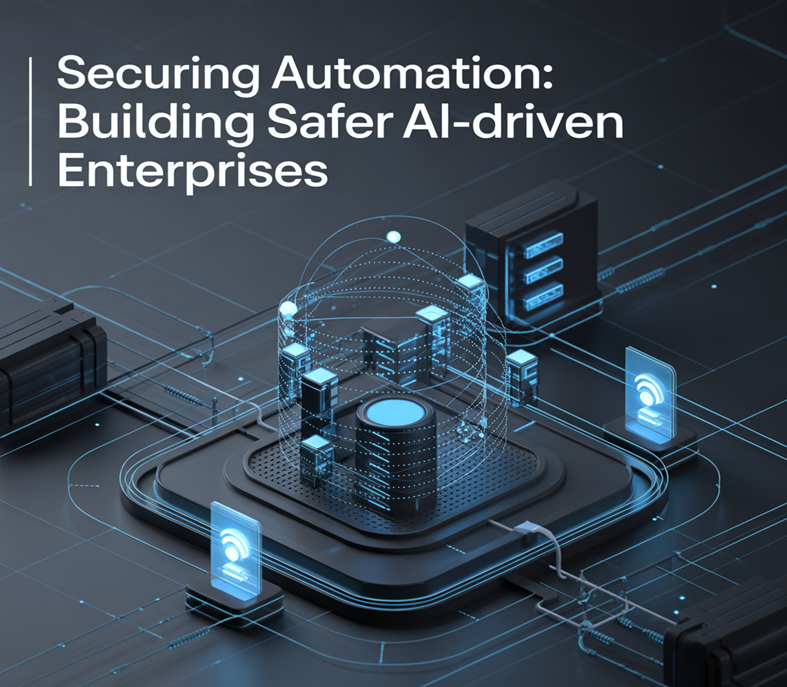
In today's digital transformation era, integrating Artificial Intelligence (AI) and Robotic Process Automation (RPA) is rapidly reshaping enterprise workflows. From streamlining operations to enhancing productivity, the impact of intelligent automation is undeniable. However, as automation deepens, so does the urgency to address its unique security and privacy challenges. In this pioneering article, Narendra Chennupati, a researcher focusing on enterprise cybersecurity frameworks, explores an advanced roadmap for mitigating the risks inherent in AI-powered systems.
Intelligent Automation's New Security Frontier
The evolution of workflow automation has transitioned from static, rule-based systems to adaptive platforms capable of real-time decision-making. With this shift, AI components have introduced unprecedented complexity and new attack vectors. Vulnerabilities like model poisoning, data extraction, and inference manipulation have surfaced, requiring enterprises to develop dedicated mitigation strategies beyond traditional cybersecurity models. These aren't hypothetical risks; they're real-time threats lurking in the connections between AI modules and enterprise systems.
Designing with Security: Building Safer Foundations
Rather than treating security as an afterthought, secure automation begins with architectural foresight. This includes deploying comprehensive encryption pipelines that safeguard sensitive data in transit, at rest, and during processing. Moreover, adopting homomorphic encryption and federated learning enhances protection by allowing AI models to function securely without accessing raw data. As workflows grow more autonomous, the principle of least privilege becomes essential, granting only the minimum access necessary to each automation component, human or machine.
Governing Access in a Distributed Intelligence Landscape
Access control is evolving from simple gatekeeping to ensuring automation integrity. ABAC enables granular, context-aware permissions. In human-AI collaboration, multi-factor and contextual authentication verify both users and bots. Role-based privileges now cover service accounts and AI agents, redefining traditional identity and access management boundaries for secure, adaptive systems.
Privacy by Design: Minimizing Exposure, Maximizing Trust
Privacy isn't simply about regulatory compliance; it's about earning user trust. Automated systems should be built with data minimization at their core, collecting only the information required for specific workflow objectives. Differential privacy, synthetic data generation, and secure multi-party computation collectively reduce the risk of sensitive data leaks while preserving model utility. These privacy-preserving strategies not only help satisfy legal mandates but also build resilient automation infrastructures that can withstand scrutiny.
Dynamic Consent and Cross-Border Caution
As automated systems interact with global users, they must be equipped with dynamic consent frameworks that support real-time permissions and revoke capabilities. This goes beyond mere checkboxes—consent management must be mapped to each workflow stage. Furthermore, with AI systems increasingly processing data across jurisdictions, cross-border data flow introduces layers of complexity. Automated geofencing, data localization, and jurisdiction-aware orchestration are crucial to remaining compliant in an ever-changing regulatory landscape.
Keeping an Eye on the Machine: Real-Time Threat Monitoring
Effective defense is not passive—it's continuous. Real-time monitoring systems are now essential for observing behavioral anomalies in automated workflows. To flag suspicious patterns, these systems track data access, API interactions, and decision outcomes. Especially for AI components, advanced threat detection strategies like model drift analysis, adversarial input detection, and outlier monitoring are needed to uncover subtle manipulations that may otherwise go unnoticed.
Responding with Precision: Incident Management for AI
Enterprises must prepare for AI automation failures with specialized response teams, forensic tools, and version-controlled backups. Clear playbooks, fallback processes, and communication templates ensure swift recovery from incidents like data poisoning or compromised models without spreading errors across systems.
Security in Motion: Continuous Assessment as a Standard
A one-time security audit no longer suffices. Continuous security assessments, including penetration testing, adversarial simulation, and data flow validation, are critical in keeping pace with evolving threats. AI systems require frequent evaluation of model robustness and bias, ensuring that ethical and operational standards remain intact. These assessments, embedded into automation development pipelines, transform security from a reactive necessity into a proactive advantage.
In conclusion, Narendra Chennupati provides a clear-eyed framework for navigating the dual demands of innovation and security in today's AI-driven enterprises. By embedding privacy and protection into the DNA of automated systems, organizations can confidently pursue efficiency gains while safeguarding against digital threats. As automation grows smarter, so must the strategies that keep it secure.
ⓒ 2025 TECHTIMES.com All rights reserved. Do not reproduce without permission.





